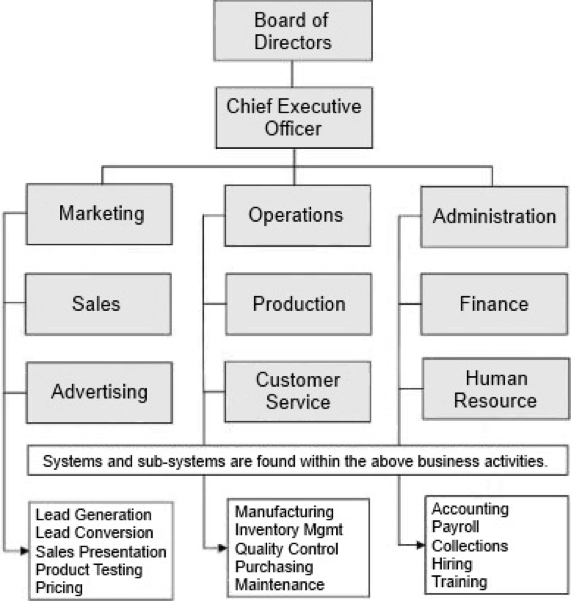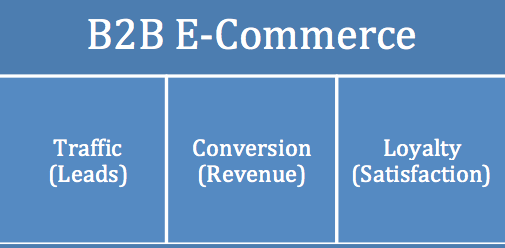Here at Credit Key, we talk to a lot of B2B e-commerce companies, and there’s something they each have in common that has been a real head scratcher. We’ll get to what that is in a moment, but first consider this: Most B2B firms, whether they have an e-commerce function or not, follow a very traditional organizational structure that looks something like this:

Of course, not all organizations are structured this way, and there’s been a lot of experimentation in the past 10 years that has resulted in flatter organizations with more autonomous departments.
But when you look beyond people’s titles and at their actual responsibilities things get really interesting. Despite the wide variety in terms of how business processes are carved up among departments and functions, you’ll notice that something is missing.
No one at the company is directly responsible for B2B e-commerce revenue. And this is true almost across the board at B2B e-commerce companies we talk to.
Who’s minding the store?
In e-commerce, there are really only three levers a company can pull to grow revenue:

In traditional B2B, the marketers are responsible for generating awareness and leads for the sales organization. The sales department is responsible for converting leads. Customer service is (partially) responsible for loyalty. But in many organizations the e-commerce function is often falls under IT or marketing, neither of which are equipped to be responsible for revenue, while the sales department is focused on, well, sales (which are different from online conversions).
So who should be responsible for making sure the online store runs right? If sales and marketing are focused on generating and converting traditional leads, then it seems that the responsibility of closing sales online should be a head of e-commerce. Too often, though, the e-commerce role is focused on the products and content in the store. Very few, if any have accountability when it comes to revenue, growth or profit.
The bottom line is this: For companies that want to grow, not having someone responsible for revenue is like having a sales person who’s not responsible for getting new customers. It’s just not going to work.
What does accountability look like?
Clearly, we’re talking about having someone be responsible for revenue generation. But what does that look like, especially in an organization whose structure hasn’t changed for 10, 20, 30, or even 50+ years?
Whoever ultimately assumes the responsibility for revenue—be it a VP of e-commerce, a marketing director, or some other role, the organization needs to define an achievable, accurate revenue goal. Additionally, the person responsible needs to have their compensation tied to meeting that goal (that’s one incentive to ensure the goals are achievable). This is a key step. After all, why would anyone perform in their position if the rewards aren’t tied to their performance?
To that end, and because e-commerce often touches a variety of functions across the organization’s departments, it’s essential to build revenue accountability into every role up and down the organizational hierarchy (or across, if it’s flat). If you have a marketing department, have them identify the metrics that contribute directly to revenue. If you have a fulfillment or customer service departments, usually cost centers, have them identify the functions or outcomes that contribute to revenue, such as speed of fulfillment as correlated to repeat orders.
None of this is particularly new to those working in e-commerce, but it is still a fairly new concept at many B2B firms. The faster they figure this out, the faster they can grow their business.
Want to learn how to grow your B2B e-commerce revenue? Contact us for a demo of how Credit Key can help.
